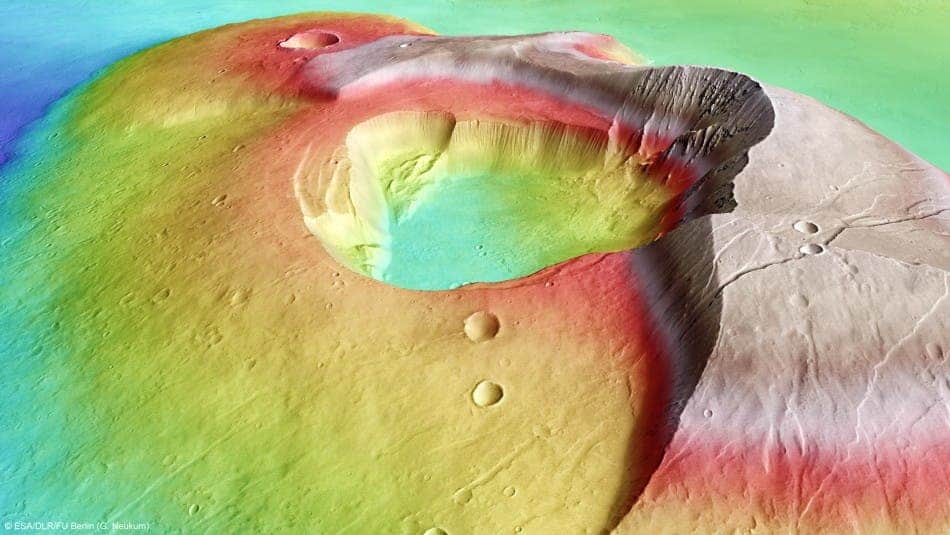Mars was never the same after a monster volcano erupted on the Red Planet some 3.5 billion years ago. Before the massive eruption, its poles were in completely different locations, so where it rivers and ice sheets. Moreover, the crust buckled and twisted in alien ways, like the skin and flesh of a peach shifting in relation to its pit.

Today, the legacy of this geologically shaping event is known as the Tharsis dome. It’s more than 5,000 square kilometers (2,000 square miles) wide and 12 km (7.5 mi) thick. It’s an aberration considering we’re talking about a planet half the diameter of Earth.
This mysterious dome has been itching researchers for a long of time.
Sylvain Bouley, a geomorphologist at Universite Paris-Sud, was among the researchers involved in the present work. They picked up from a previous research published in 2010 that suggested were the Tharsis dome removed from Mars, the planet would shift by its axis.

Based on present observations, but also previous simulations, the model Bouley and team constructed suggests Tharsis was active for hundreds of millions of years. The material it displaced was so huge that the poles shifted by about 20 degrees with respect to their current positions.
The researchers calculated the topography of Mars before the event and found the planet looked a lot different. The model explains a lot of mysteries like why underground reservoirs of water ice, until now considered anomalous, are located far from the poles of Mars; why the Tharsis dome is today situated on the equator or why rivers (now drybeds) formed in seemingly arbitrary positions.
“If a similar shift happened on Earth, Paris would be in the Polar Circle,” said Bouley said.
“We’d see Northern Lights in France, and wine grapes would be grown in Sudan.”
From now on, this new geography will have to be taken into account when studying early Mars to look for traces of life or for an ocean, for instance.
“There are still a lot of unanswered questions. Did the tilt cause the magnetic fields to shut down? Did it contribute to the disappearance of Mars’s atmosphere, or cause the rivers to stop flowing? These are things we don’t know yet,” said Bouley
Refence: Late Tharsis formation and implications for early Mars, Sylvain Bouley, David Baratoux, Isamu Matsuyama, Francois Forget, Antoine Sjourn, Martin Turbet & Francois Costard. Nature, 2 March 2016. DOI: 10.1038/nature17171


